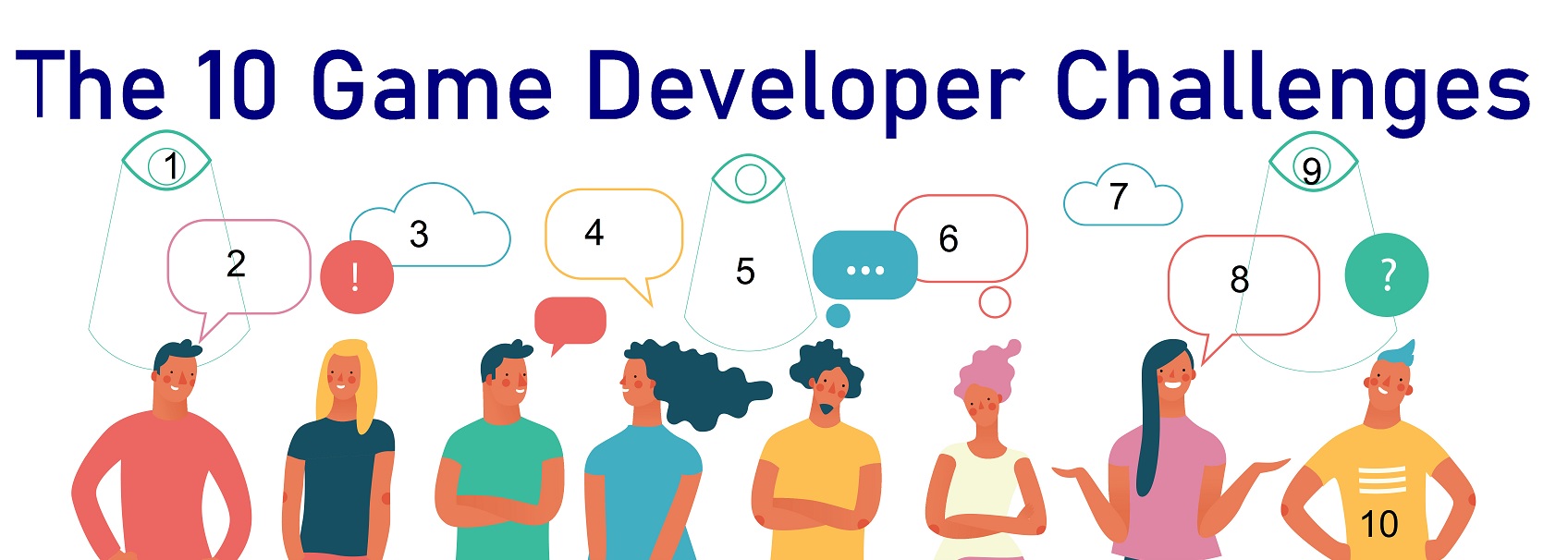
The 10 Major Challenges for HTML5 Game Developers
Demand for high-quality, addictive HTML5 games is surging, but developers face many challenges in meeting it. As mobile app development evolves with new programming languages, monetization strategies, and distribution channels, developers must navigate a dynamic industry landscape. Games make up nearly a quarter of all apps downloaded on Android, and global mobile game revenue surpassed $102 billion in 2020. However, the path to success is complex, from conceptualization to monetization. Here are the ten major challenges HTML5 game developers encounter today.
Contents
- 1 1. Targeting the Right Audience
- 2 2. Managing User Retention
- 3 3. Avoiding Feature Creep
- 4 4. Optimizing for Multiple Devices
- 5 5. Enhancing User Experience
- 6 6. Balancing Performance and Battery Usage
- 7 7. Ensuring Data Security
- 8 8. Getting Noticed in Crowded App Stores
- 9 9. Ongoing Optimization and Maintenance
- 10 10. Monetizing Effectively
- 11 Final Thoughts
1. Targeting the Right Audience
Building the game is only half the battle; finding the right audience is crucial. Targeting the right players is challenging, requiring in-depth app analytics, user personas, and rigorous testing. Tools like Flurry help developers optimize games for specific audiences, while App Annie and Google Trends offer insights into user demographics. Understanding who will play your game is essential to creating a sustainable user base.
2. Managing User Retention
Continuing my The 10 Major Challenges of HTML5 Game Developers post, Getting initial downloads is achievable through viral campaigns, but retaining users is much harder. The average retention rate for mobile games is just 35%, and many games struggle to keep players engaged. Surveys, A/B testing, and user interface (UI) improvements can boost retention. However, finding the right balance is essential to keep users engaged without overwhelming them.
3. Avoiding Feature Creep
Feature creep happens when developers add unnecessary features, complicating the game and delaying releases. To avoid this, it’s helpful to break down development into phases. Initial stages should include only essential features, with room for future updates. This approach allows the marketing team to promote the game’s core strengths first, with added features rolled out later.
4. Optimizing for Multiple Devices
HTML5 games must perform well on a range of devices, from iPhones to Android phones with various screen sizes. Despite the duopoly of iOS and Android, there are still significant device compatibility challenges. Platforms like Unity and PhoneGap help simplify cross-platform development, and HTML5’s flexibility has made it popular among developers.
5. Enhancing User Experience
Interactivity and responsiveness are key to a great user experience. Today’s mobile devices include advanced sensors that create new possibilities, but using them requires creativity. Developers can add interactive features like shaking, tilting, and flipping, which make the game more engaging. Balancing interactivity with simplicity is crucial to retain players and improve gameplay satisfaction.
6. Balancing Performance and Battery Usage
Continuing my The 10 Major Challenges of HTML5 Game Developers post, High performance is essential, but it often comes at the cost of battery life. Users don’t want a game that drains their phone battery or overheats their device. Beta testing is essential to ensure your game is efficient and doesn’t strain devices. With feedback from testers, developers can optimize features to deliver a smooth experience while conserving power.
7. Ensuring Data Security
Games that collect user data, such as location or social media profiles, must prioritize security. If not handled carefully, sensitive data can put users at risk and even disqualify a game from app stores. Encryption is a valuable tool for safeguarding data, and third-party security reviews can help identify any vulnerabilities before launch.
8. Getting Noticed in Crowded App Stores
The App Store and Google Play are crowded, with millions of apps competing for attention. Effective marketing is essential to make your game stand out. Developers need to understand concepts like search engine optimization (SEO) and app store optimization (ASO). Offering a freemium model or cross-promotion with popular games can help attract users. Listing the game on alternative app stores like Amazon App Store or GetJar can also increase visibility.
9. Ongoing Optimization and Maintenance
Routine maintenance is essential to keep your game performing well and to address bugs, load times, and updates. Feedback from users can guide improvements, but updates should be planned to avoid overburdening the development team. Regularly rolling out bug fixes and improvements can reduce costs over time and improve player satisfaction.
10. Monetizing Effectively
Continuing my The 10 Major Challenges of HTML5 Game Developers post, With multiple monetization options—ads, subscriptions, in-app purchases, and freemium models—choosing the right strategy is crucial. Advertising, particularly rewarded video ads, has become a top choice for monetizing HTML5 games. Rewarded video ads from platforms like AppLixir let players choose when to watch, which improves user experience and engagement. This approach has a high success rate, as 71% of players find rewarded ads valuable, leading to greater monetization potential.
Final Thoughts
The demand for mobile games is growing, and so is the competition on app stores. Developing a great game is challenging, but turning it into a successful venture is even harder. While most challenges involve internal development, monetization remains a critical hurdle. Platforms like AppLixir simplify monetization through rewarded video ads, helping developers maximize revenue while maintaining a high-quality user experience. With AppLixir, you can increase your returns on investment, fund ongoing development, and ultimately achieve greater success in the mobile gaming industry.


